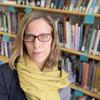Unearthed Collection of Photographs Depicting Life Inside a World War II Jewish Ghetto to Go on View at the Museum of Fine Arts, Boston
- BOSTON, Massachusetts
- /
- March 01, 2017
In March 2017, the powerful exhibition Memory Unearthed: The Lodz Ghetto Photographs of Henryk Ross makes its US debut at the Museum of Fine Arts, Boston (MFA), presenting a moving and intimate visual record of the Holocaust through the lens of Henryk Ross (1910–1991).
The Polish Jewish photographer was one of just 877 recorded survivors of the Lodz Ghetto’s original population of more than 160,000 people, rounded up by the Nazi Germans and sealed off from the outside world.
Previously a photojournalist for the Polish press, Ross was confined to the ghetto in 1940 and put to work by the Nazi regime as a bureaucratic photographer; his tasks included taking photographs for Jewish identification cards, as well as images that were used as propaganda to promote the efficiency of the ghetto’s labor force.
Unofficially—and at great risk—Ross took it upon himself to document the complex realities of life in the Lodz Ghetto under Nazi rule, culminating in the deportation of thousands to death camps at Chelmno and Auschwitz. Fearing that he could be discovered, he hid his negatives in 1944 and returned for them following the ghetto’s liberation, discovering that more than half of the original 6,000 had survived.
“I buried my negatives in the ground in order that there should be some record of our tragedy,” Ross later said. “I was anticipating the total destruction of Polish Jewry. I wanted to leave a historical record of our martyrdom.”
Memory Unearthed, on view at the MFA from March 25 to July 30, 2017, presents approximately 300 objects, including hundreds of photographs, artifacts such as ghetto notices and the photographer’s own identification card, as well as footage from the 1961 trial of Nazi war criminal Adolf Eichmann, where Ross’s photographs were submitted as evidence. An album of contact prints, handcrafted by Ross and shown in its entirety as the centerpiece of the exhibition, serves as a summation of his memories, capturing a personal narrative of a harrowing moment in modern history.
“This exhibition, featuring stories of the Lodz Ghetto through the lens of Polish Jewish photographer Henryk Ross, is a testament to the strength of the human spirit and the power of photography and collective memories,” said Matthew Teitelbaum, Ann and Graham Gund Director of the MFA.
The Lodz Ghetto was the longest-existing and second-largest, after Warsaw, of at least 1,000 ghettos established by the Nazis to isolate Jews within the Eastern European cities Germany occupied between 1939 and 1945. Ross and his wife Stefania were among more than 160,000 people consolidated into a poor, industrial section of Lodz (pronounced Wudz in Polish; Lodzh in Yiddish; Ludz in English), a city located in the heart of Poland. Three months after the Lodz Ghetto was liberated by the Russian Red Army in January 1945, Ross excavated a box containing canisters of film, which he and Stefania had buried at 12 Jagielonska Street. In 2007, his collection was given to the Art Gallery of Ontario, where Memory Unearthed, which features both original prints made by Ross and digital prints made from his negatives, debuted in January 2015.
In 1987, more than four decades after the war, Ross assembled hundreds of contact prints selected from his surviving negatives into a 17-page “folio” album, roughly arranged in rows. While he numbered the frames, he did not restore the chronology of the collection. Instead, the folio forms Ross’s own reflection of life and death in the Lodz Ghetto, juxtaposing scenes of starvation and deportation with images of everyday activities, family dinners and wedding celebrations. Enlarged versions of the folio photographs are projected on a wall, following Ross’s sequence.
The exhibition also features a “Memory Wall,” composed of 100 modern prints of Ross’s portraits of Lodz Ghetto residents—most taken before non-official photography was forbidden in December 1941. In joyful snapshots and solemn introspections, Ross captured the men, women and children of the ghetto with assurance and insight. For the photographer and his subjects, these were calm moments, in which they could briefly forget the everyday misery of life in the ghetto. Through Ross’s photographs, each person left behind a lasting record of his or her dignified existence, and the portrait wall serves as a reminder of photography’s ability to create meaning and chronicle history.
The exhibition is accompanied by an extensive catalogue, Memory Unearthed: The Lodz Ghetto Photographs of Henryk Ross, produced by the Art Gallery of Ontario and distributed by Yale University Press. It features essays by curators, critics, filmmakers and scholars, including Maia-Mari Sutnik, Eric Beck Rubin, Bernice Eisenstein, Michael Mitchell and Robert Jan van Pelt.

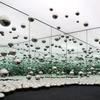
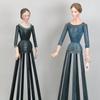
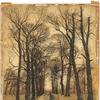



![Peter Paul Rubens (Flemish, 1577–1640), After Titian (Tiziano Vecelli) (Italian [Venetian], c. 1488–1576), Rape of Europa, 1628–29. Oil on canvas, 71 7/8 x 79 3/8 in. Peter Paul Rubens (Flemish, 1577–1640), After Titian (Tiziano Vecelli) (Italian [Venetian], c. 1488–1576), Rape of Europa, 1628–29. Oil on canvas, 71 7/8 x 79 3/8 in.](/images/c/e2/2e/Jan20_Rape_of_Europa100x100_c.jpg)

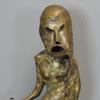

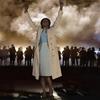

![Offering a Truce [Bested], 1895, is estimated to sell for between $1,300,000 and $1,800,000 on March 22, 2014, for The Russell: An Exhibition and Sale to Benefit the C.M. Russell Museum. Offering a Truce [Bested], 1895, is estimated to sell for between $1,300,000 and $1,800,000 on March 22, 2014, for The Russell: An Exhibition and Sale to Benefit the C.M. Russell Museum.](/images/c/a8/20/Dec10_Offering_a_Truce__Bested_300dpi100x100_c.jpg)
